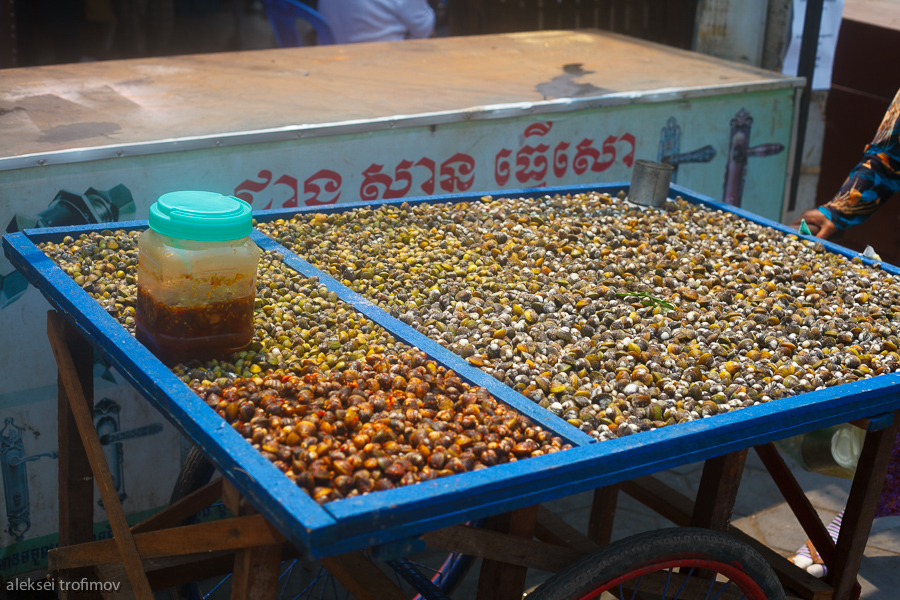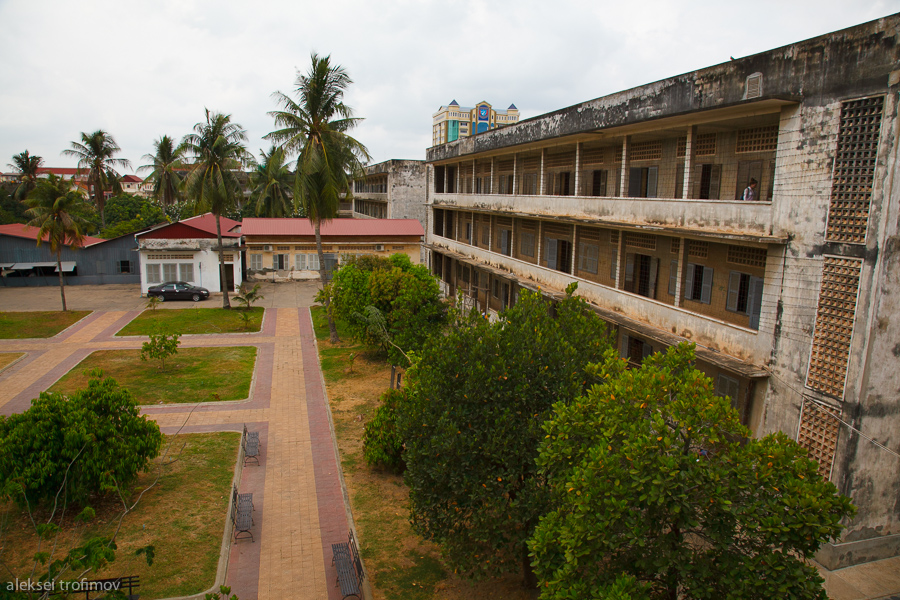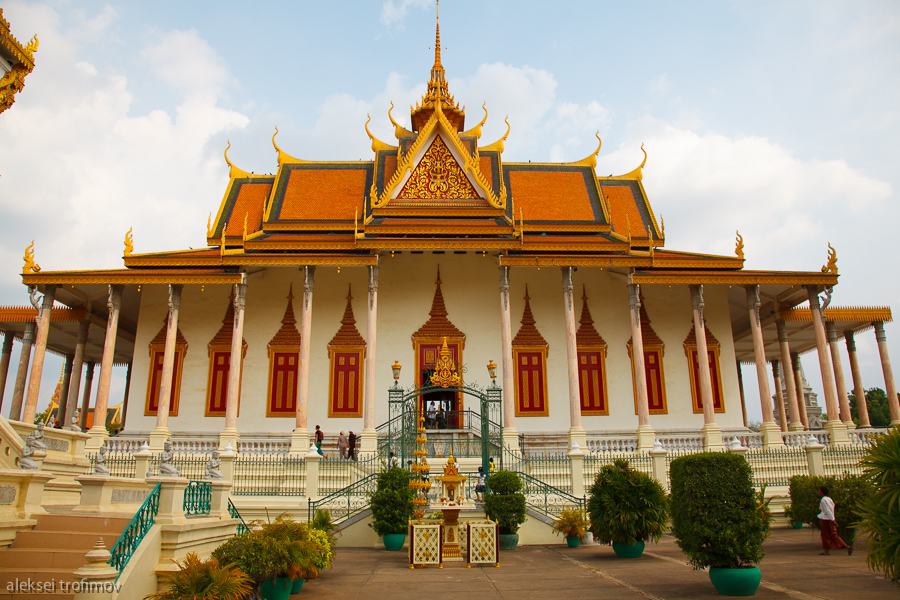If the Thai food is overall very spicy and is built on variations of curry, the food of Cambodia is a lot less spicy and is rather aromatic and based on varios herbs, souces and seasonings.
The most popular dish is amok – freshwater fish steamed until the consistency of a mousse, with interesting souces. In general freshwater fish is very popular in Cambodia, as the Mekong is the main artery of the country. Another popular dish is lok lak. It is beef cut in cubes and deep fried with lime, onion and salt souce.
Meat is often accompanied by lotus roots, as well as the plant called morning glory, typically served in oyster sauce.
Unusual dishes tried: very spicy quail egg soup with frog legs; fish rye soup; deep fried pig uteruses. Of course, fried tarantulas are very exotic. These are collected out of their burrows in an area about 80 km from Phnom Penh. When caught, their poisonous teeth are immediately removed, and they are shipped around the country.
As everywhere in South East Asia, the ready made food is sold on every streetcorner. Snails next to the Russian market:

Continue reading Cambodia part 3: food

